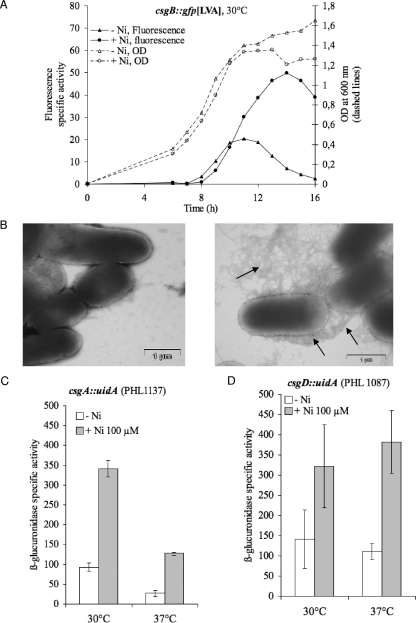FIG. 7.
Overinduction of curli transcription by nickel in batch culture. (A) csgB-gfp[LVA] expression under conditions favorable for expression of curli. Planktonic cultures of PHL1273 were grown at 30°C in the presence (open triangles) or absence (open circles) of 100 μM of nickel. Bacterial growth was estimated from the OD600 (dashed lines). Specific activity for GFP fluorescence (solid lines) was calculated as follows: (GFP fluorescence − initial fluorescence)/OD600. Three independent experiments were performed. Results of a typical experiment are presented. (B) TEM observation of the induction of curli production by nickel. Strain PHL818 was grown in the absence (left panel) or presence (right panel) of 100 μM NiCl2. The arrows point to curli structure. (C) csgA::uidA expression. The expression level of the fusion csgA::uidA was compared in the late exponential phase under conditions favorable for curli expression (30°C; left) and conditions unfavorable for curli expression (37°C; right). Strain PHL1137 was grown in planktonic culture in standard medium (white bars) or in the presence of 100 μM of nickel (dark bars). Specific β-glucuronidase activity was calculated as described in Materials and Methods. The values are means for triplicate cultures; the error bars indicate standard deviations. (D) csgD::uidA expression. Strain PHL1087 was grown in standard medium (white bars) or in the presence of 100 μM of nickel (dark bars). Other conditions are as described in the legend to panel C.

